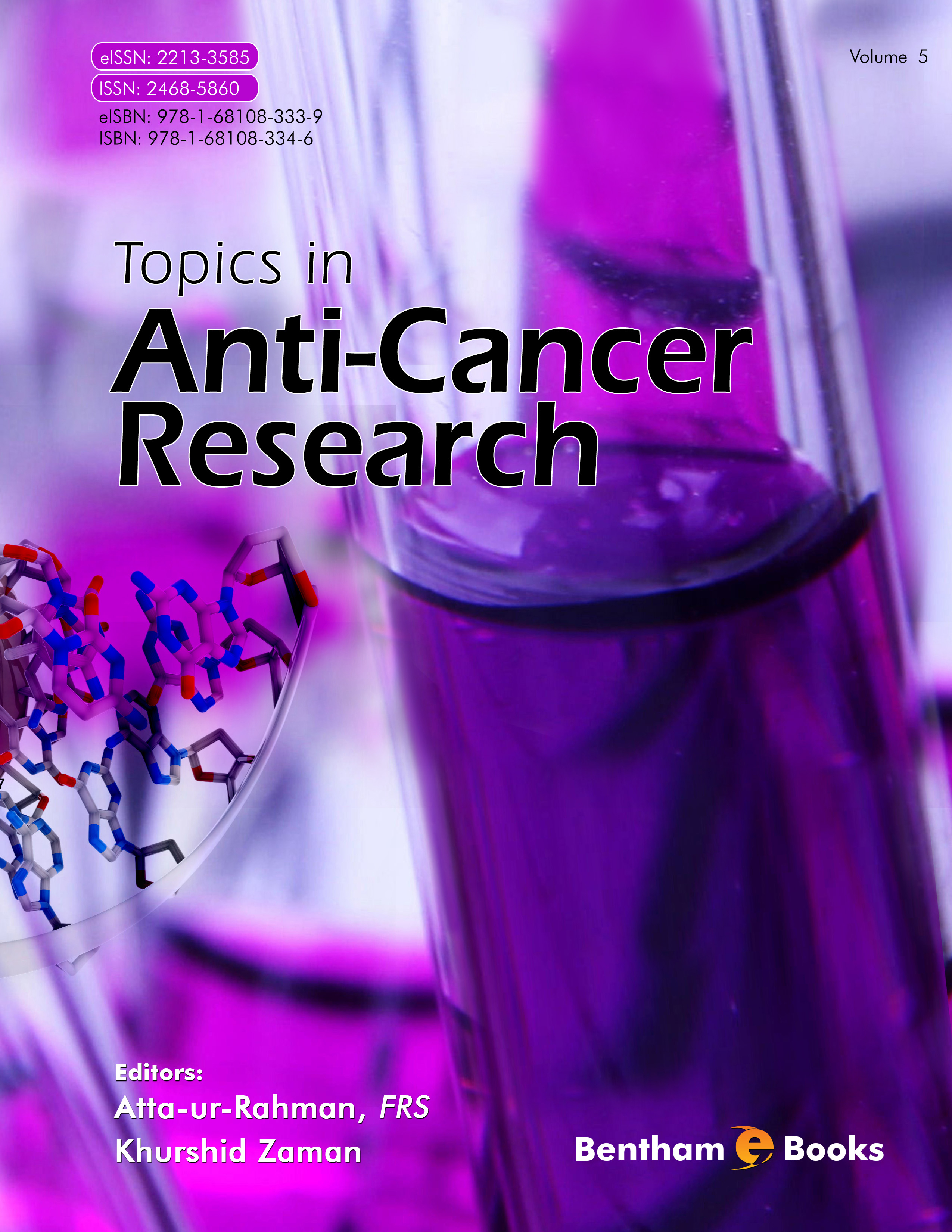Preface
The fifth volume of the Book series entitled “Topics in Anti-Cancer Research” is based on new contributions from eminent scientists working in the field of cancer research and therapy. The topics presented cover recent advances in cancer drug development targeting carbonic anhydrase IX and XII.
Frost et al. discuss the roles of carbonic anhydrase IX and XII in stabilizing pHe in physiological conditions and their use in anti-cancer targets. Studies on the recent patents of CA IX and XII targeted inhibitors are also discussed, especially with reference to sulfonamide-based small molecule inhibitors, derivatives of boron cluster compounds, metal complexes of poly(carboxyl)amine-containing ligands, nitroimidazole-, ureidosulfonamide and coumarin-based compounds and G250 and A610 monoclonal antibodies for cancer therapy.
Zhu et al. present an analysis of patents and patent applications associated with cancer drug development in China including existing regulatory policies, data and trend of Chinese domestic anti-cancer drug patents, exploration of Chinese applicants in other countries and recent case study of liver cancer. Bosnakovski has reviewed the promising field of cell based anti-cancer drug delivery systems and studied recent patents and current developments.
Tutar discuss the potential role of heat shock proteins in the metabolic processes of cancer cells and the interaction of heat shock proteins with other proteins and kinases to inhibit cancer cells leading to apoptosis, for better therapy. Patents using this mechanism are also reviewed.
Dhama et al. reviewed the data of recent searches and patents on tumor homing peptides (THPs) functioning for targeted drug delivery in cancer cell and the significance of THPs in cancer therapy.
We expect that these topics on new drug targets, drug delivery approaches and techniques in cancer research & therapy will prove to be of great interest to researchers and scientists in the field of cancer and its treatment.
The editors are obliged to the authors for their excellent and timely contributions and to the reviewers for their thorough reviewing, which has enabled us to improve the quality of these chapters. We also extend our thanks to Mr. Mahmood Alam and Mrs. Rafia Rehan, as well as other colleagues of Bentham Science Publishers, for their rigorous participation and support in the accomplishment of the present eBook.
Atta-ur-Rahman, FRS
Kings College
University of Cambridge
Cambridge
UK
&
Khurshid Zaman
Bentham Science Publishers
USA

